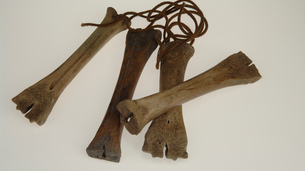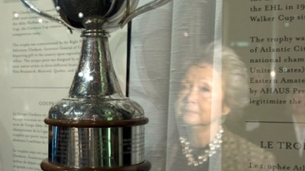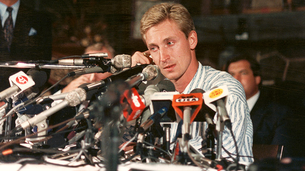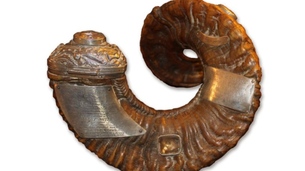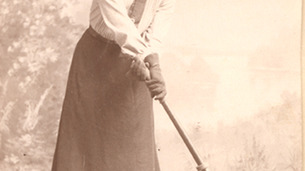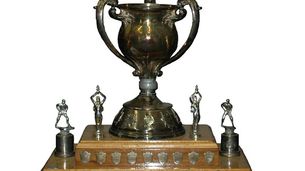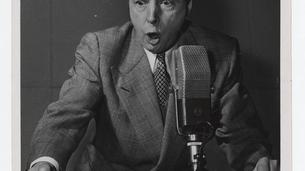Constance Mary Katherine Applebee (1873–1981), promoter of women's field hockey, was born Katherine Mary at Chigwell Row, Chigwell, Essex, on 4 June 1873, the daughter of James Kay Applebee (1827–1903), a Unitarian minister and lecturer, and his second wife, Katherine Ann Applebee, née Louthman (1835/6–1929). In her early childhood her father left the family and moved to the United States where he continued his career as a minister and lecturer, and where he seems to have had a second family (obituary, Unitarian Register, vol. 82, American Unitarian Association, 1903). Her mother, a schoolmistress, ran girls' schools at Holly Grove House, Bushey, Hertfordshire, and then at Paignton, Devon.
A delicate child, Applebee was educated at home, and was taught Latin and Greek by a clergyman living nearby. She began to exercise to improve her health, and found that she enjoyed sports and excelled at them. Her new interest coincided with the growing popularity of games at girls' schools and colleges, and the introduction of gymnastics from Germany and Sweden. In 1898 she passed the examinations of the British College of Physical Education in London, founded in 1891 as one of several fledgling professional bodies that undertook to certify teachers of physical education for elementary schools. After further training, she became a member of the British College of Physical Education in 1899, and then chose to train in a private institution.
Applebee taught in girls' schools in Yorkshire, and offered private tuition including ‘Remedial Physical Exercises for Ladies and Children of Delicate Physique’ (early documents, box 5, folder 2, Constance Applebee Collection 3H/Applebee, Bryn Mawr Special Collections). Her life changed dramatically, however, when in 1901 she attended Dr Dudley A. Sargent's summer school at Harvard University's Hemenway gymnasium. According to a perhaps apocryphal story, Applebee mentioned field hockey as a good form of exercise for women, and was astonished when her classmates had never heard of it. The following day, using improvised equipment, she gave a demonstration, effectively introducing the sport to the United States.
Field hockey had actually been played by women students at Goucher College in Baltimore, Maryland, in the 1890s, where it was introduced by a British instructor (Anna Heubeck Knipp and Thaddeus P. Thomas, The History of Goucher College, 1938, 476). In Britain, however, the game was much better known, having been played at boys' schools since the 1870s, and at women's colleges and private clubs beginning in the late 1880s. The summer school episode was probably most significant, however, because Harriet Ballantine, the athletic director at Vassar College in Poughkeepsie, New York, was present. Ballantine invited Applebee to demonstrate field hockey at Vassar, and then at several other women's colleges, girls' schools, and clubs. Before returning to Britain Applebee became a founder member of the American Field Hockey Association, the first women's hockey club in the United States. She was particularly concerned with standardizing the sport, compiling the Spalding Sports Guide, Field Hockey for Men and Women (1901), which introduced British field hockey rules. Although some critics considered field hockey an unduly strenuous game for women, the game's association with élite British schools and colleges and the fact that it was not played by American men eased its acceptance.
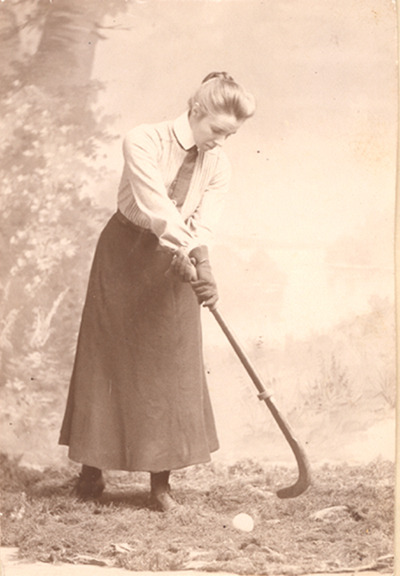
Applebee returned to the United States the following year to coach hockey at prestigious American women's colleges including Mount Holyoke, Radcliffe, and Bryn Mawr College in Pennsylvania. In 1904 M. Carey Thomas, the leading feminist educator and president of Bryn Mawr, appointed Applebee as director of outdoor sports. Applebee claimed that she convinced Thomas that women's participation in sports contributed to their empowerment. ‘You want all these students to go out and do something in the world, to get the vote. What's the good of their having the vote if they're too ill to use it?’ (Constance Applebee, quoted in ‘In the Beginning’, interview with Helen Bell de Freitas and Louise Morley Cochrane, Bryn Mawr Alumnae Bulletin, summer, 1977, 2).
At that time athletics or team sports were separate from physical education, which chiefly consisted of gymnastics and corrective work, and were controlled entirely by the students. Applebee reported that the students did their own umpiring and ‘fought like cats’. She took control away from the students and endeavoured to teach them sportsmanship as well as standardized rules. By 1906 she was invited to take over the physical education department as well. In 1907 she convinced Thomas to start a health department, with regular doctor's examinations and monitoring. Known to generations of students as the Apple, she believed that everyone should have a chance to participate in sports. She promoted intramural athletics, organizing 90 per cent of the student body at Bryn Mawr into twenty-six hockey teams.
While coaching at a school in England, Applebee met an American woman, Mary Warren Taylor (1862–1936), who became her life partner. In 1906 Taylor joined her at Bryn Mawr, where she later served as secretary of the health department. She and Taylor lived together in a small apartment near the college, and became well established members of the Bryn Mawr community. Applebee was an active participant in campus life, helping to found a student publication, the College News, and making peace between two warring student Christian organizations. A devout Anglican all her life, she led the fundraising committee of the newly united Christian Association.
While at Bryn Mawr Applebee continued coaching at local colleges, schools, and clubs. Indeed the prominence of field hockey among schoolgirls and in collegiate sport in the greater Philadelphia area has been credited to her presence at Bryn Mawr (Philadelphia Inquirer, 7 Nov 1992, C8). Her reputation for integrity was such that on one occasion she coached both Bryn Mawr and the opposing team for an important match. She remained involved with the national field hockey movement, writing the Field Hockey Handbook (1913), and in 1922 was a founder of the United States Hockey Association. The following year she established a summer hockey camp at Mt Pocono, Pennsylvania, where British coaches came every summer to teach. In 1924 she founded The Sportswoman, the first women's magazine to focus exclusively on sport, and served as editor, president, and funder of the magazine, which was published until 1936. Although meant to be a vehicle for the United States Hockey Association, only about 25 per cent of the magazine's content was about field hockey. As editor, she engaged in the controversy over women's intercollegiate sports that emerged in the late 1920s. Many American women physical educators, concerned about the excesses of sporting competition in men's colleges, supported ‘play days’, where students demonstrated their skills in a non-competitive environment. Applebee, however, advocated ‘hockey festivals’, where school and college teams remained intact.
In 1929 at the age of fifty-six Applebee retired from Bryn Mawr owing to Mary Taylor's poor health. The two women moved to a cottage, The Withies, in Burley, near Ringwood, in the New Forest, Hampshire, where Taylor died in 1936. Applebee continued to teach at the hockey camp and served as a visiting coach at Bryn Mawr and elsewhere for another thirty years. She typically spent six months of every year—the autumn hockey season—living with friends in the United States. Marooned there during the Second World War, she spent time as a hockey coach at the College of William and Mary in Virginia, where she raised funds to send four ambulances, emblazoned ‘donated by the Women Hockey Players of the USA’, to the United Kingdom.
After the war Applebee was active in charitable activities in Burley. From 1967 failing sight prevented her from travelling to the United States, although she regularly entertained visitors from Bryn Mawr at her cottage. In 1976, aged ninety-four, she attended the conference and tournament of the International Federation of Women's Hockey Associations in Germany. In her later years, she received many honours including an honorary membership in the All-England Women's Hockey Association in 1976, and an award of merit from the Association of Intercollegiate Athletics for Women in 1980. Applebee lived alone at Burley until shortly before her death from pneumonia, at the Ashley Lodge Nursing Home, New Milton, on 26 January 1981, at the age of 107. She was buried at St John the Baptist Church, Burley.
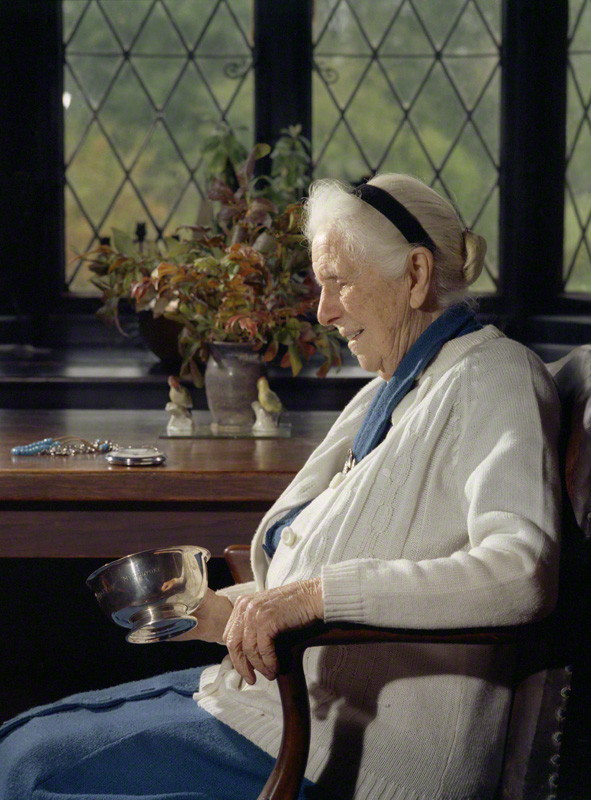
Applebee was remembered by her many students as being ‘sharp-tongued but kind … crusty … not caustic’ with a ‘screaming sense of humor’ (R. Raham, ‘Hockey is a R-R-Running Game’, Bryn Mawr Now, 8, 1981). Her colourful language on the field was legendary—‘put both claws on your stick, you one-legged turnip’ was one of her favourite utterances. Her influence in developing women's field hockey in the United States extended over generations during her long life as her students in turn became influential teachers and coaches.
Article by Fernanda Helen Perrone at http://www.oxforddnb.com/
Photo's From Bernard Lee (Bern) Schwartz 1975 at http://www.npg.org.uk/ and Bryn Mawr College Library Special Collections 1901 at http://www.brynmawr.edu/

